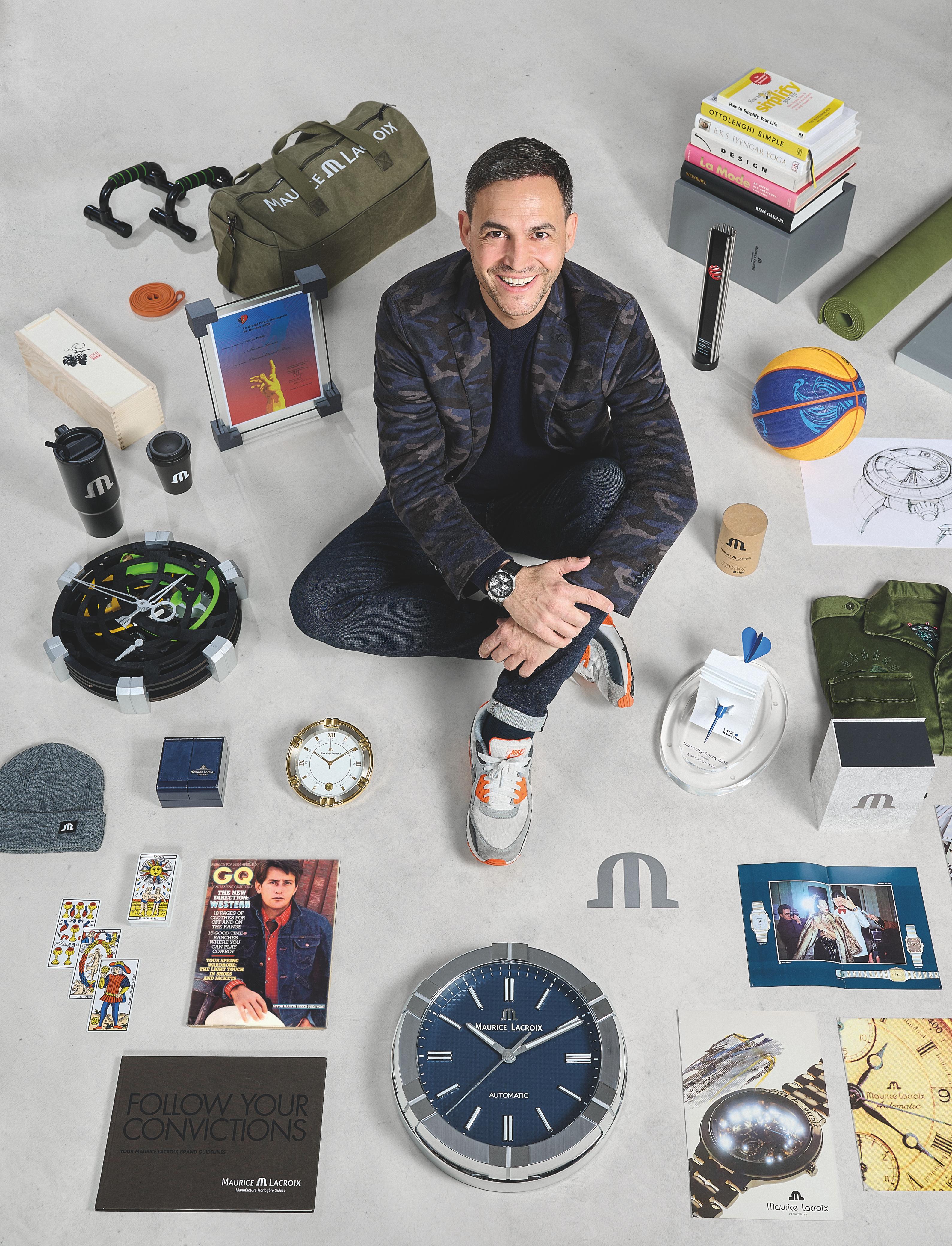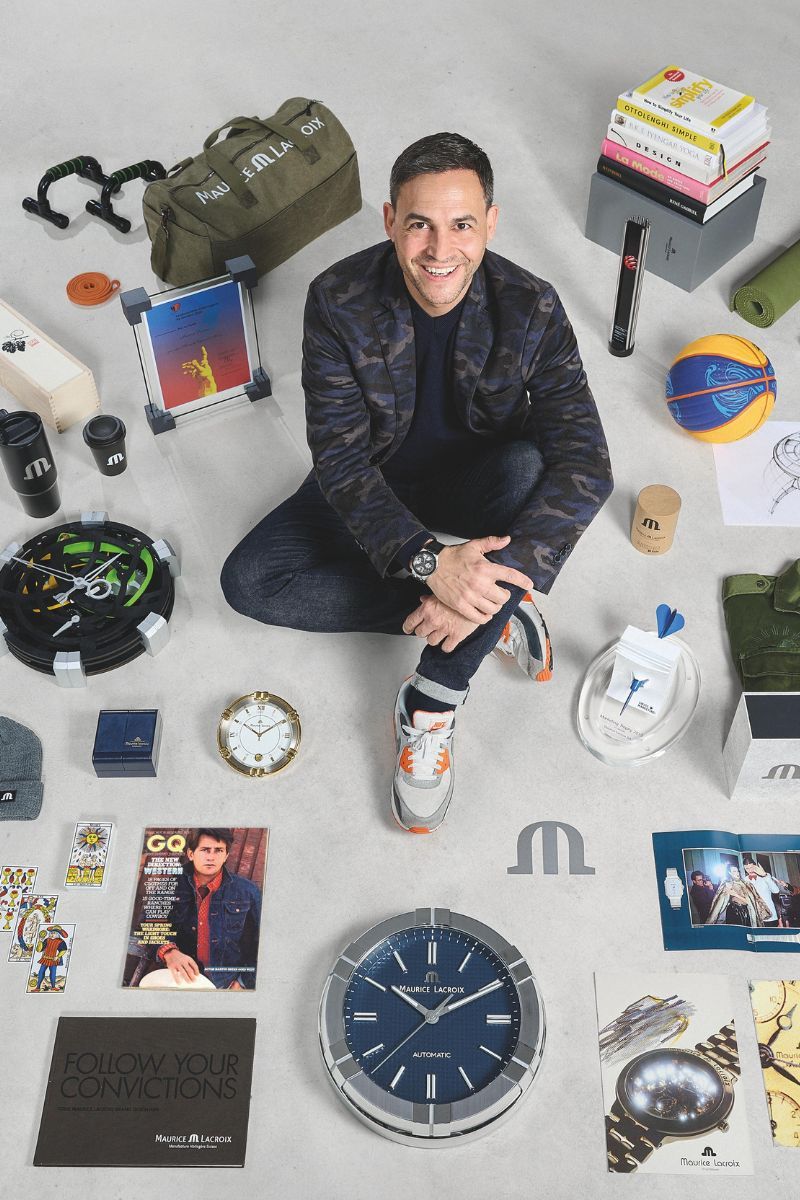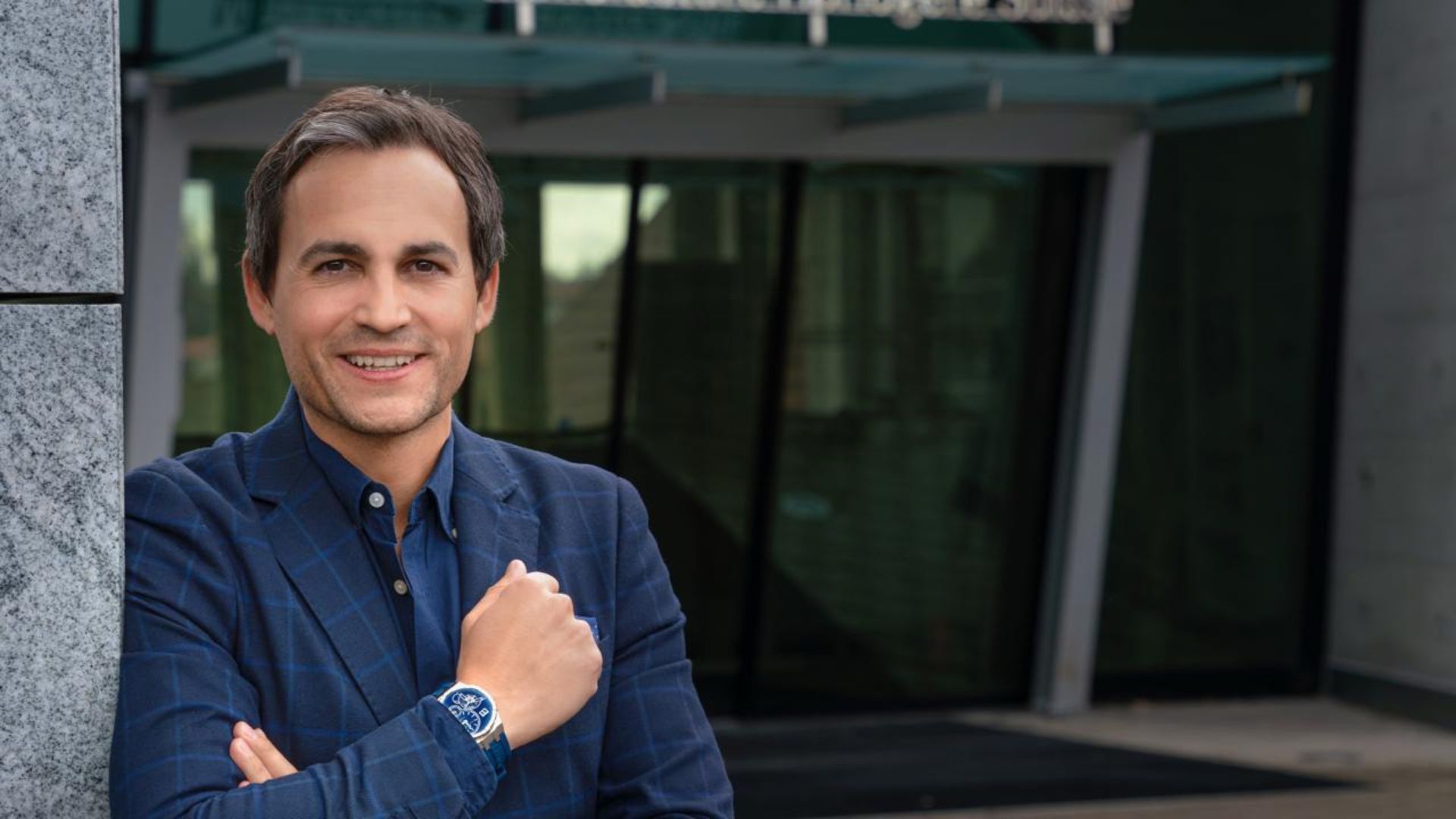When a watch brand turns fifty, it’s usually a moment for nostalgia. But for Maurice Lacroix, 2025 has been more about sharpening its future than polishing its past. The maison marked its half-century with a duo of launches — the heritage-driven 1975 collection, a clean revival of the brand’s early design language, and the Aikon IConic, a muscular evolution of its bestselling integrated-bracelet sports watch. Together, they form two sides of the same coin: one rooted in timelessness, the other pushing the edges of material innovation.
At the centre of it all is Stéphane Waser, who joined Maurice Lacroix nearly two decades ago and has since steered it through market swings, design renaissances, and a steady rise in global relevance. A former TAG Heuer executive, Waser brought with him a deep understanding of precision engineering and the delicate balance between aspiration and accessibility. Under his leadership, Maurice Lacroix has doubled down on what it calls “accessible watchmaking excellence” — Swiss mechanical craft at prices that don’t require a banker’s salary.
The brand’s story is defined by three milestones: its 1975 founding, when it evolved from a private-label manufacturer into an independent marque; its 2006 entry into in-house movement production, marking its technical maturity; and the 2016 re-launch of the Aikon, a reboot of the cult 1990s Calypso that re-introduced the brand to an entirely new, younger audience. The Aikon not only saved Maurice Lacroix but also repositioned it as one of the few Swiss players capable of mixing robust design, genuine movement know-how, and democratic pricing.
As the company celebrates its golden jubilee, Waser describes this year less as a retrospective and more as a briefing for the next fifty years. In this conversation, he reflects on heritage, innovation, and how a mid-tier Swiss brand can thrive in a luxury market obsessed with extremes.

Looking back at five decades of Maurice Lacroix, what would you call the defining milestones — the moments that shaped the brand’s identity?
There are three, really. The first goes back to 1975, when the brand was created. We’d been making watches for others — private-label manufacturing — but the quality was so good that we decided to put our own name on the dial. From day one, the idea was clear: bring excellent Swiss watchmaking to accessible prices. That’s been our DNA ever since.
The second key moment was 2006, when we began building our own movements. In Swiss watchmaking, that’s like going from driving a tuned car to designing your own engine. It proves mastery. And the third milestone is the Aikon, which revived our 1990s Calypso collection. When we relaunched it in 2016, first in quartz and later in mechanical versions, it completely changed our audience — suddenly we were speaking to millennials. It gave the brand a new rhythm.
This year’s 50th-anniversary 1975 collection feels both nostalgic and fresh. What guided its design language?
We wanted to bring back a timeless everyday watch. Over the years, we’d leaned heavily into sporty, integrated designs with the Aikon, but collectors were telling us they missed something simple, elegant, and classic. The 1975 collection fills that gap. It’s compact, well-proportioned, offered in 40 and 36 millimetres, and priced around CHF 1,200 — about ₹1.3 lakh. We even added small complications like a GMT and a Day-Date limited edition. The case-back engraving shows a pair of horses, a nod to our factory’s origins in the Jura, where there’s a bridge known locally as the Horse Bridge. It’s these quiet details that connect us to our past.
On the opposite end, the new Aikon IConic seems far more experimental — almost like a laboratory piece.
Exactly. The Aikon is our icon — you don’t mess with that. So we created the IConic as a playground for innovation. The name stands for Innovative Craftsmanship. It uses forged-carbon dials, titanium cases, ceramic bezels, and an upgraded movement with a 60-hour power reserve. Every dial pattern is unique because the carbon weave is pressed individually. We also introduced our new patented strap-release system — you press a button, the strap pops out, and you snap in another. It’s quick, intuitive, and feels premium.
The integrated-bracelet trend has exploded again. How does Maurice Lacroix stay distinct in such a crowded segment?
When we relaunched the Aikon, we were among the first to revisit the 1970s sports-chic style. Today, everyone has one — from micro-brands to haute-horlogerie maisons. What keeps us unique is value and identity. Every Aikon or 1975 has a strong design signature, great finishing, a visible movement, and genuine complications. We don’t just make another stainless-steel sports watch; we make something you can wear daily and still feel proud to show to a collector friend.
You often describe Maurice Lacroix as a “lifestyle urban brand.” What does that mean in practice?
We’re serious about watchmaking, but we don’t take ourselves too seriously. We like to play. Look at pieces like the Gravity, the Mercury, or the Square Wheel — they’re technically clever but also fun. That’s important because our audience is younger, more curious, and less bound by tradition. They appreciate skill, but they also want personality.
India seems to be emerging as a significant part of your story. How do you see this market today?
India is a fascinating market — young, connected, and fast-growing. The rise of collectors’ clubs, independent blogs, and local watch media has really helped. Our price point fits perfectly with the expanding middle and upper-middle class, and our communication — digital, creative, approachable — resonates well. The social-media energy in India amplifies what we do; we don’t have massive advertising budgets, so that organic conversation helps us grow.
And looking ahead — what will the next decade of Maurice Lacroix be established on?
The goal is consistency. We’ll stay focused on that CHF 1,000 to 2,000 range, continue refining the Aikon and 1975 families, and keep proving that fine Swiss craftsmanship can still be democratic. We’ll also keep developing our own movements — like the new in-house big-date retrograde we’re launching soon. What matters is longevity. When someone buys a Maurice Lacroix, I want them to see the same model ten years later and feel they made the right choice.
If you had to pick one watch that best captures the spirit of the brand?
Stéphane Waser: The Aikon Triple Retrograde. It combines everything we stand for — design, playfulness, and manufacture expertise. The retrograde displays sweep across the dial like choreography, and the architecture feels generous, open, confident. It’s Maurice Lacroix at its best.






